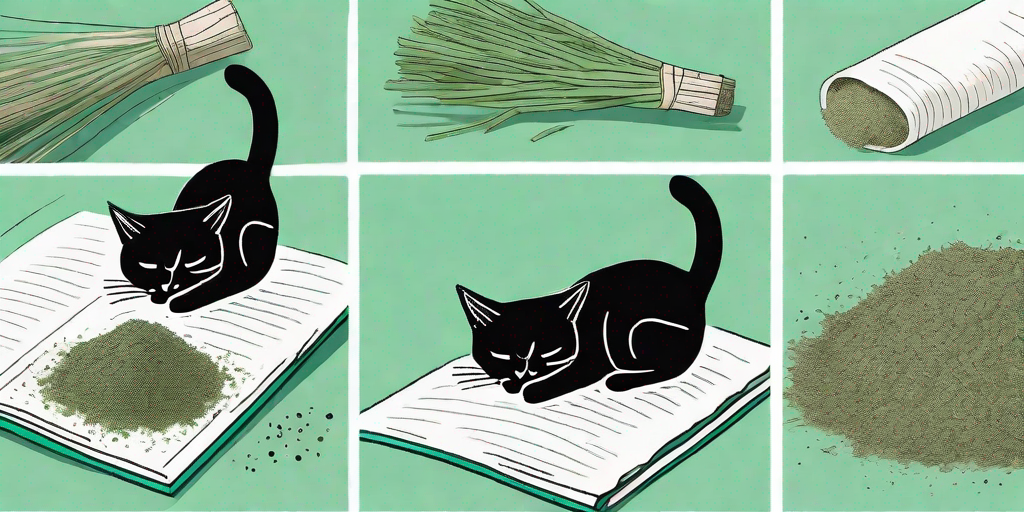
If you're a cat parent, you've likely heard of the magical herb that sends our feline friends into a state of euphoria - catnip. This mint family member is a feline's dream, and drying it at home can be a fun and rewarding process. But how do you go about it? Fear not, dear reader, for we're about to embark on a furr-tastic journey into the world of catnip drying.
Understanding Catnip: The Feline Elixir
Before we delve into the drying process, let's take a moment to understand what catnip is. Catnip, or Nepeta cataria, is a perennial herb from the mint family. It's native to Europe, but has spread across the globe, and is now commonly found in North America. It's most famous for its effect on cats, which ranges from mild interest to absolute obsession.
What causes this reaction? It's all down to a chemical compound called nepetalactone. When a cat gets a whiff of this, it triggers a response in their brain that can result in behaviours like rolling, jumping, purring, and generally acting like they've just won the lottery. It's a safe and natural way to stimulate your cat and can be a great addition to their playtime.
The Catnip Drying Process
Step 1: Harvesting
The first step in drying catnip is, of course, harvesting it. The best time to do this is late in the morning, after the dew has dried but before the sun gets too hot. This is when the plant's oils (which contain the all-important nepetalactone) are at their peak. To harvest, simply cut the stems at the base, leaving enough of the plant so it can regrow.
Remember, not all catnip is created equal. The potency can vary depending on the plant's age, where it's grown, and even the time of year. So don't be disheartened if your first batch isn't a hit - it's all part of the process.
Step 2: Preparing for Drying
Once you've harvested your catnip, it's time to prepare it for drying. Remove any dead or discoloured leaves, and give the stems a good rinse under cold water. This will remove any dirt or bugs that might be hiding in the leaves.
After rinsing, pat the stems dry with a clean towel. It's important to remove as much moisture as possible before drying, as this can prevent mould and mildew. Once they're dry, tie the stems together in small bundles. These can then be hung upside down to dry.
Step 3: Drying
The drying process is where the magic happens. Hang your bundles in a warm, dry place with good air circulation. This could be a garage, shed, or even a spare room. The key is to keep them away from direct sunlight, as this can degrade the nepetalactone.
Drying times can vary depending on the conditions, but generally, it takes about two weeks for catnip to fully dry. You'll know it's ready when the leaves crumble easily between your fingers. Once it's dried, simply strip the leaves from the stems and store them in an airtight container.
Fun Ways to Use Dried Catnip
Now that you've got your dried catnip, what can you do with it? The possibilities are endless! Here are a few ideas:
-
Stuff it into a toy: Many cat toys come with a small pouch that can be filled with catnip. This can provide hours of entertainment for your feline friend.
-
Sprinkle it on a scratching post: If your cat is more interested in your furniture than their scratching post, a little catnip might just change their mind.
-
Add it to their bed: A sprinkle of catnip in your cat's bed can make it an even more appealing place to nap.
Frequently Asked Questions
Is catnip safe for my cat?
Absolutely! Catnip is non-toxic and safe for cats. However, like anything, it should be used in moderation. Too much catnip can lead to mild gastrointestinal upset, but this is rare and usually self-limiting.
My cat doesn't seem interested in catnip. Why?
Not all cats respond to catnip. Sensitivity to nepetalactone is hereditary, and about 30% of cats lack the gene that triggers the response. It's also worth noting that kittens and older cats are less likely to react to catnip.
Can I use fresh catnip instead of dried?
Yes, you can! Fresh catnip can be a great treat for your cat. However, drying it allows you to store it for longer periods, and the drying process can concentrate the nepetalactone, making it more potent.
So there you have it - a comprehensive guide to drying catnip for your feline friend. With a little time and patience, you can provide your cat with a natural, safe, and fun treat that they're sure to love. Happy drying!











